Special Report
This Is the City in Every State Where COVID-19 Is Growing the Fastest

Published:
Last Updated:

The U.S. has reported more than 38.6 million confirmed COVID-19 cases as of August 30. There have been more than 632,000 reported deaths from COVID-19-related causes — the highest death toll of any country.
The extent of the spread of the novel coronavirus continues to vary considerably from state to state, and from city to city. Even as the number of daily new cases is flattening or even declining in some parts of the country, it is surging at a growing rate in others.
Nationwide, the number of new cases is growing at an increasing rate. There were an average of 49.9 daily new coronavirus cases per 100,000 Americans in the week ending August 30, an increase from the week prior, when there were an average of 40.5 daily new coronavirus cases per 100,000 people.
Metropolitan areas with a high degree of mobility and a large population may be particularly vulnerable to outbreaks. While science and medical professionals are still studying how exactly the virus spreads, experts agree that outbreaks are more likely to occur in group settings where large numbers of people routinely have close contact with one another. Cities with high concentrations of dense spaces such as colleges, correctional facilities, and nursing homes are particularly at risk.
The city with the highest seven-day average of new daily COVID-19 cases per capita is in Georgia. In the Brunswick, GA, metro area, there were an average of 231.7 daily new coronavirus cases per 100,000 residents in the week ending August 30, the most of any U.S. metro area. Other cities where COVID-19 is growing the fastest include Gulfport-Biloxi, MS; Houma-Thibodaux, LA; and Lakeland-Winter Haven, FL.
To determine the metropolitan area in each state where COVID-19 is growing the fastest, 24/7 Wall St. compiled and reviewed data from state and local health departments. We ranked metropolitan areas according to the average number of new daily COVID-19 cases per 100,000 residents in the seven days ending August 30. Data was aggregated from the county level to the metropolitan area level using boundary definitions from the U.S. Census Bureau. Population data used to adjust case and death totals came from the U.S. Census Bureau’s 2019 American Community Survey and are five-year estimates. Unemployment data is from the Bureau of Labor Statistics and is seasonally adjusted.

Alabama: Daphne-Fairhope-Foley
Avg. new daily cases in Daphne in week ending August 30: 131.5 per 100,000
Avg. new daily cases in Daphne in week ending August 23: 120.2 per 100,000
COVID-19 cases in Daphne as of August 30: 32,671 (15,350.7 per 100,000)
Peak pandemic unemployment in Daphne: 16.3% (April 2020)
Daphne population: 212,830 (133.9 people per sq. mi.)
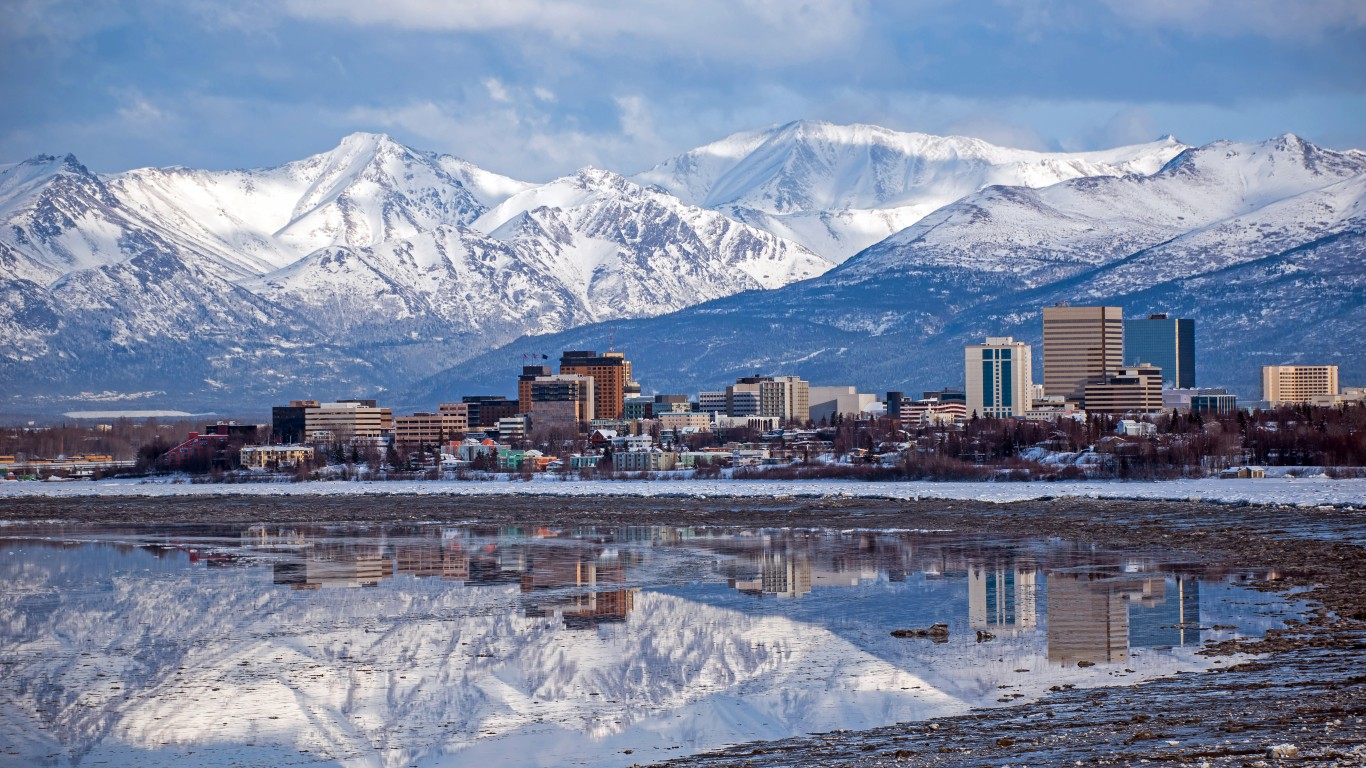
Alaska: Anchorage
Avg. new daily cases in Anchorage in week ending August 30: 71.0 per 100,000
Avg. new daily cases in Anchorage in week ending August 23: 45.0 per 100,000
COVID-19 cases in Anchorage as of August 30: 50,967 (12,776.9 per 100,000)
Peak pandemic unemployment in Anchorage: 14.8% (April 2020)
Anchorage population: 398,900 (15.2 people per sq. mi.)
These are all the counties in Alaska where COVID-19 is slowing (and where it’s still getting worse).

Arizona: Phoenix-Mesa-Chandler
Avg. new daily cases in Phoenix in week ending August 30: 52.3 per 100,000
Avg. new daily cases in Phoenix in week ending August 23: 44.7 per 100,000
COVID-19 cases in Phoenix as of August 30: 700,219 (14,705.5 per 100,000)
Peak pandemic unemployment in Phoenix: 12.8% (April 2020)
Phoenix population: 4,761,603 (326.9 people per sq. mi.)

Arkansas: Jonesboro
Avg. new daily cases in Jonesboro in week ending August 30: 118.0 per 100,000
Avg. new daily cases in Jonesboro in week ending August 23: 95.8 per 100,000
COVID-19 cases in Jonesboro as of August 30: 22,473 (17,123.5 per 100,000)
Peak pandemic unemployment in Jonesboro: 9.3% (April 2020)
Jonesboro population: 131,241 (89.5 people per sq. mi.)

California: Yuba City
Avg. new daily cases in Yuba City in week ending August 30: 85.3 per 100,000
Avg. new daily cases in Yuba City in week ending August 23: 55.2 per 100,000
COVID-19 cases in Yuba City as of August 30: 20,181 (11,701.2 per 100,000)
Peak pandemic unemployment in Yuba City: 16.8% (April 2020)
Yuba City population: 172,469 (139.7 people per sq. mi.)

Colorado: Greeley
Avg. new daily cases in Greeley in week ending August 30: 45.2 per 100,000
Avg. new daily cases in Greeley in week ending August 23: 28.0 per 100,000
COVID-19 cases in Greeley as of August 30: 37,037 (12,129.6 per 100,000)
Peak pandemic unemployment in Greeley: 10.0% (April 2020)
Greeley population: 305,345 (76.6 people per sq. mi.)
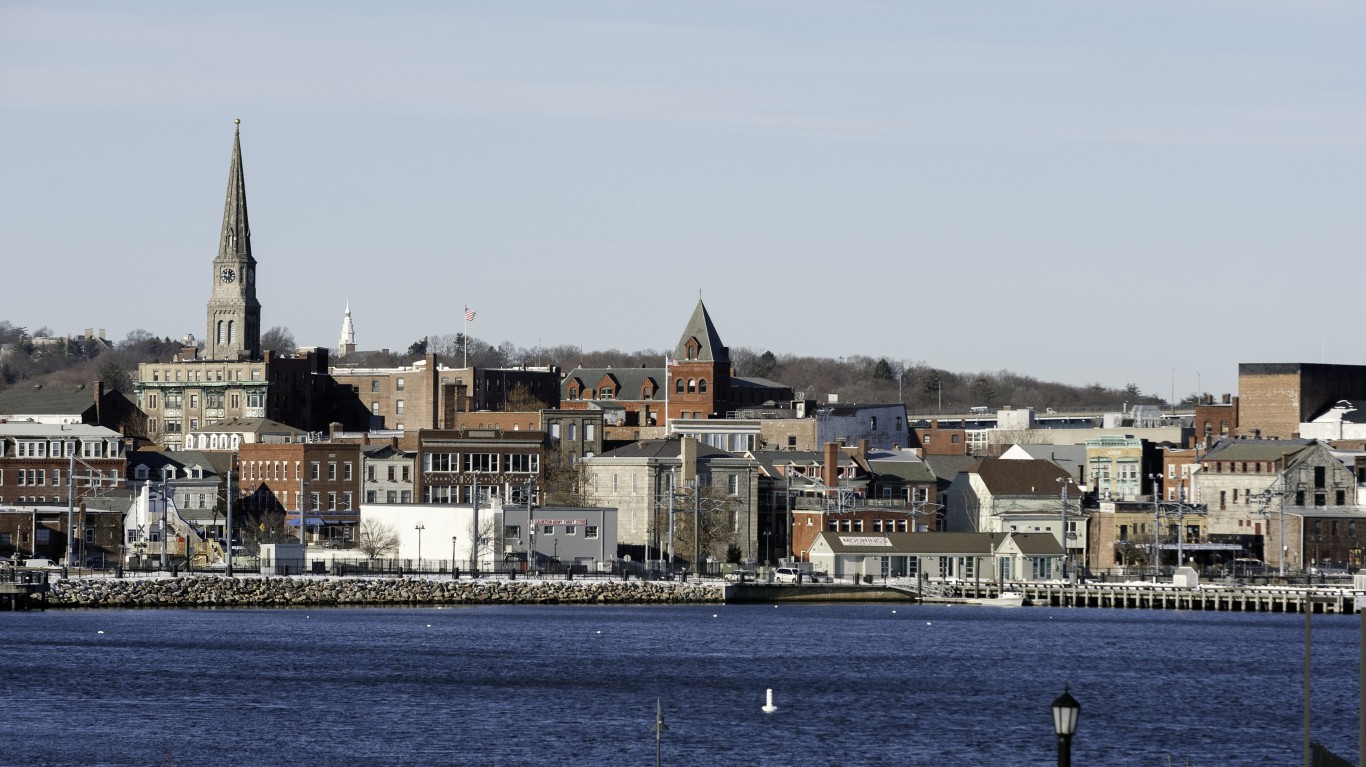
Connecticut: Norwich-New London
Avg. new daily cases in Norwich in week ending August 30: 23.9 per 100,000
Avg. new daily cases in Norwich in week ending August 23: 20.6 per 100,000
COVID-19 cases in Norwich as of August 30: 24,391 (9,121.9 per 100,000)
Peak pandemic unemployment in Norwich: 15.0% (May 2020)
Norwich population: 267,390 (402.2 people per sq. mi.)

Delaware: Dover
Avg. new daily cases in Dover in week ending August 30: 54.1 per 100,000
Avg. new daily cases in Dover in week ending August 23: 40.5 per 100,000
COVID-19 cases in Dover as of August 30: 20,516 (11,610.7 per 100,000)
Peak pandemic unemployment in Dover: 17.3% (May 2020)
Dover population: 176,699 (301.4 people per sq. mi.)

Florida: Lakeland-Winter Haven
Avg. new daily cases in Lakeland in week ending August 30: 168.0 per 100,000
Avg. new daily cases in Lakeland in week ending August 23: 135.6 per 100,000
COVID-19 cases in Lakeland as of August 30: 108,366 (15,791.8 per 100,000)
Peak pandemic unemployment in Lakeland: 18.0% (May 2020)
Lakeland population: 686,218 (381.7 people per sq. mi.)
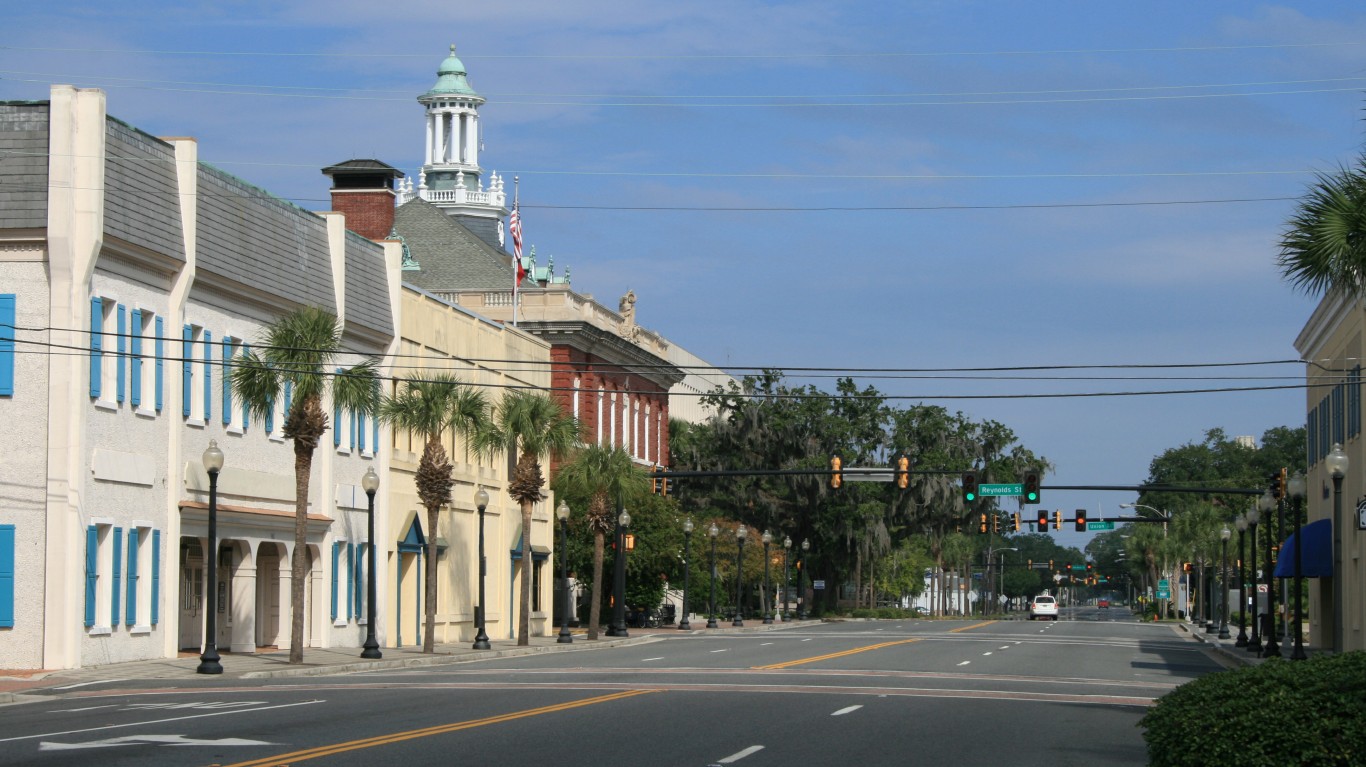
Georgia: Brunswick
Avg. new daily cases in Brunswick in week ending August 30: 231.7 per 100,000
Avg. new daily cases in Brunswick in week ending August 23: 128.1 per 100,000
COVID-19 cases in Brunswick as of August 30: 16,356 (13,931.9 per 100,000)
Peak pandemic unemployment in Brunswick: 16.6% (April 2020)
Brunswick population: 117,400 (91.3 people per sq. mi.)

Hawaii: Kahului-Wailuku-Lahaina
Avg. new daily cases in Kahului in week ending August 30: 64.2 per 100,000
Avg. new daily cases in Kahului in week ending August 23: 44.2 per 100,000
COVID-19 cases in Kahului as of August 30: 7,555 (4,551.8 per 100,000)
Peak pandemic unemployment in Kahului: 34.8% (April 2020)
Kahului population: 165,979 (142.9 people per sq. mi.)
These are all the counties in Hawaii where COVID-19 is slowing (and where it’s still getting worse).
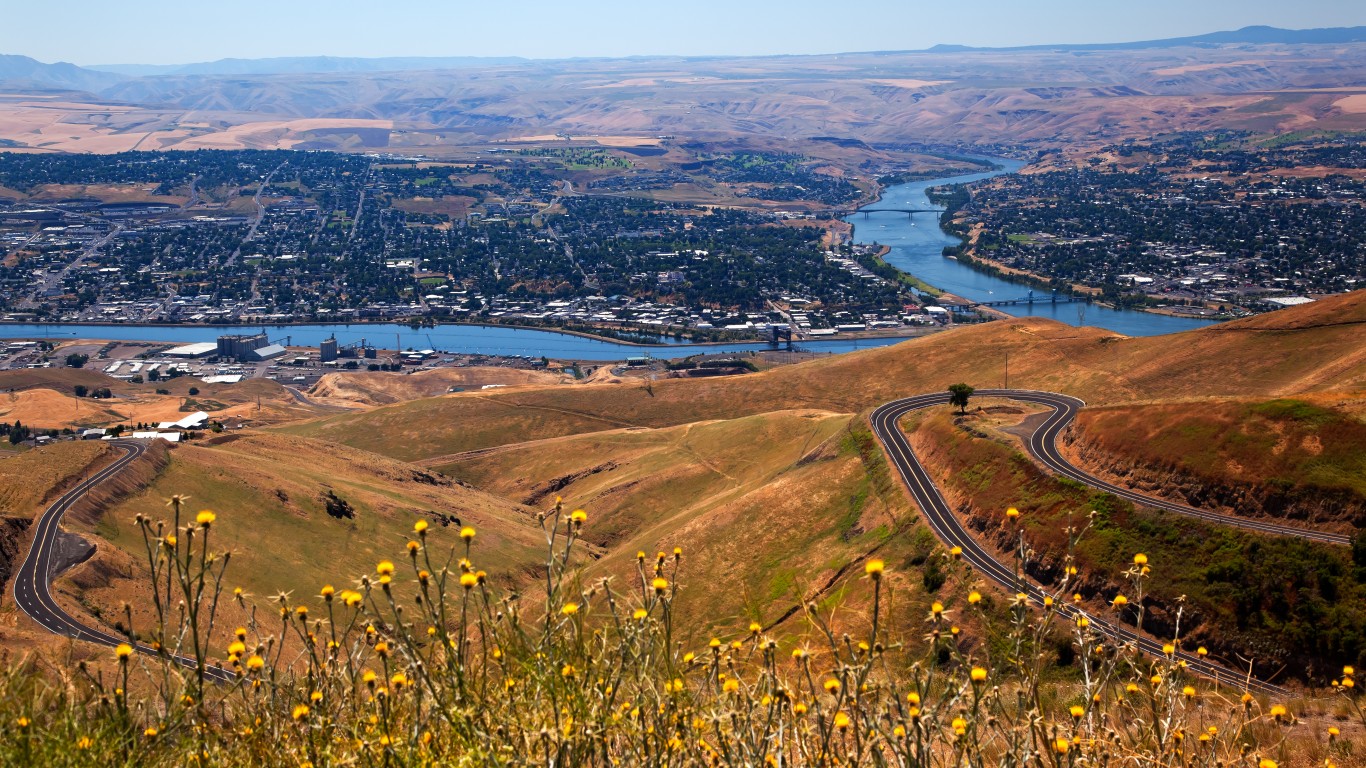
Idaho: Lewiston, ID-WA
Avg. new daily cases in Lewiston in week ending August 30: 82.4 per 100,000
Avg. new daily cases in Lewiston in week ending August 23: 62.7 per 100,000
COVID-19 cases in Lewiston as of August 30: 6,604 (10,543.1 per 100,000)
Peak pandemic unemployment in Lewiston: 11.2% (April 2020)
Lewiston population: 62,638 (42.2 people per sq. mi.)
These are all the counties in Idaho where COVID-19 is slowing (and where it’s still getting worse).
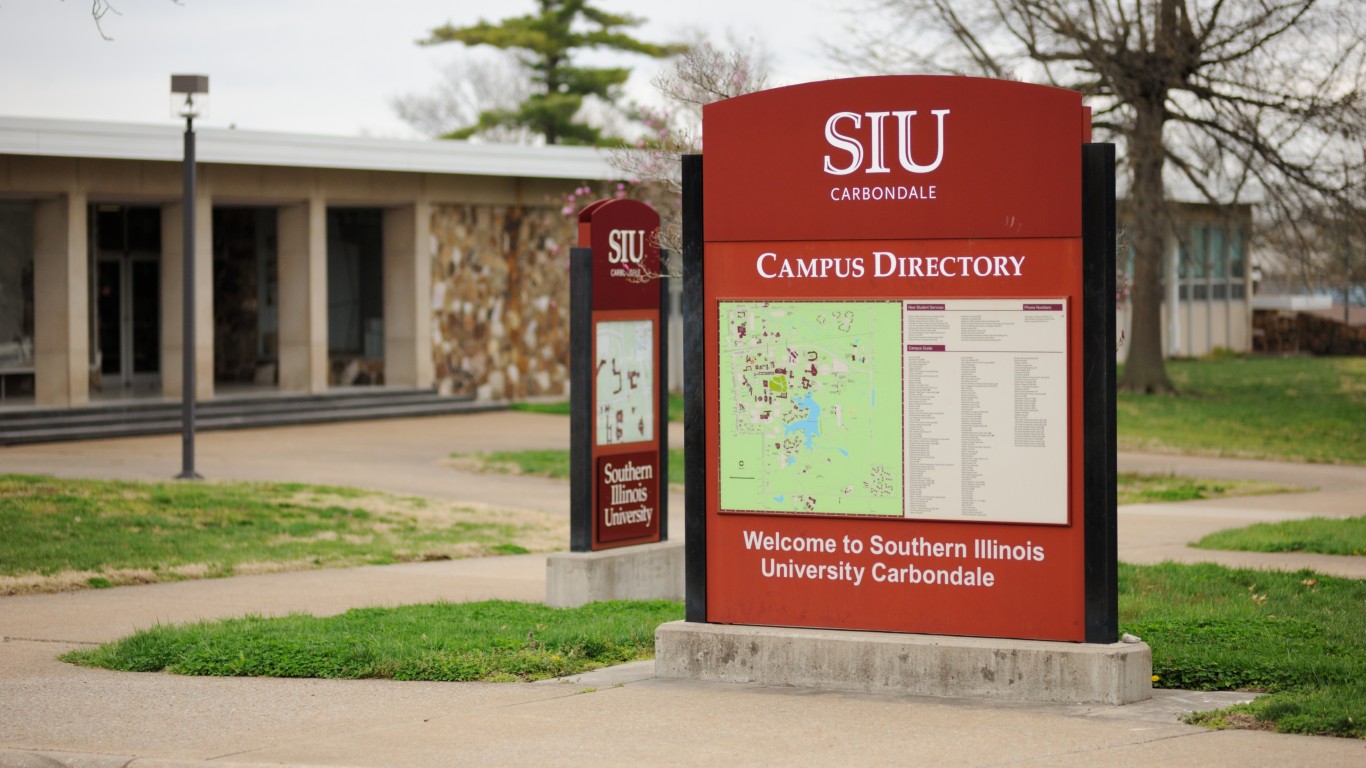
Illinois: Carbondale-Marion
Avg. new daily cases in Carbondale in week ending August 30: 92.8 per 100,000
Avg. new daily cases in Carbondale in week ending August 23: 81.0 per 100,000
COVID-19 cases in Carbondale as of August 30: 18,378 (13,358.7 per 100,000)
Peak pandemic unemployment in Carbondale: 18.1% (April 2020)
Carbondale population: 137,573 (102.0 people per sq. mi.)
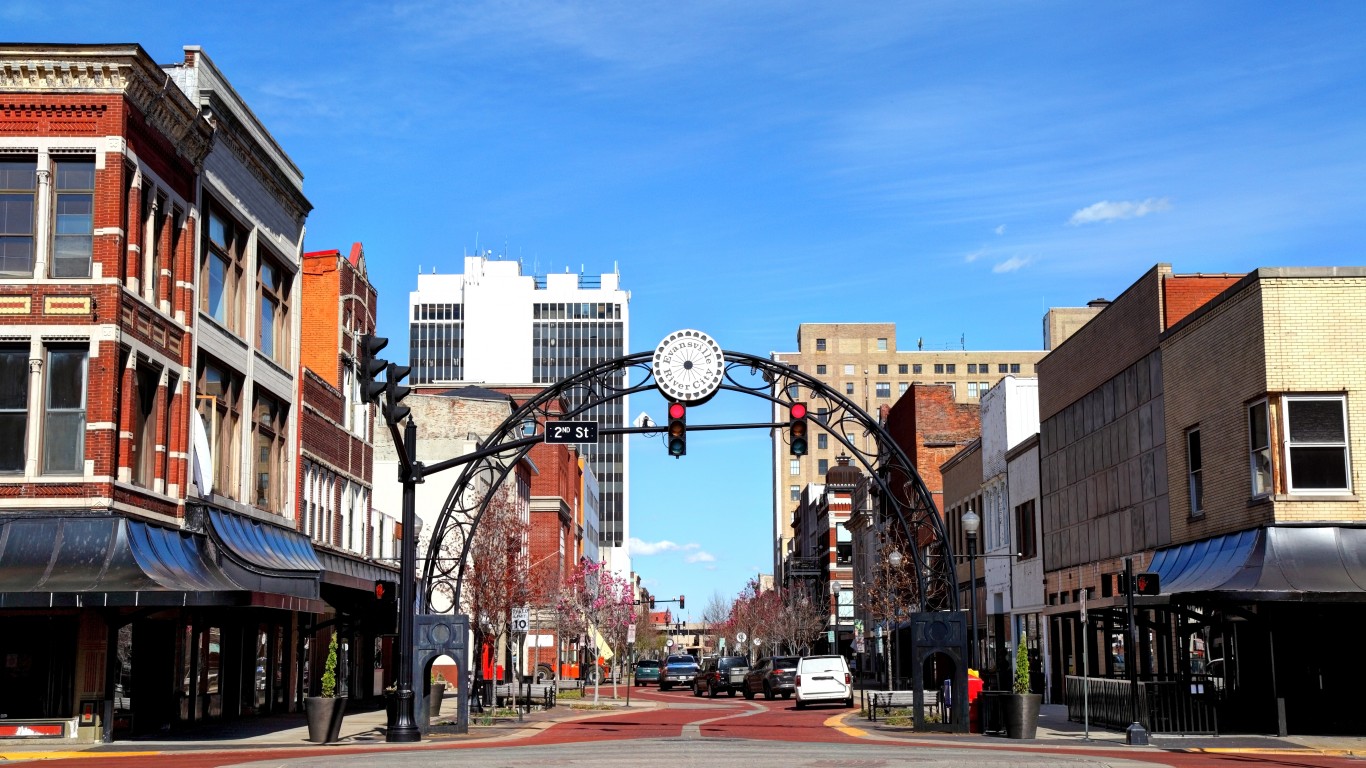
Indiana: Evansville, IN-KY
Avg. new daily cases in Evansville in week ending August 30: 96.0 per 100,000
Avg. new daily cases in Evansville in week ending August 23: 64.9 per 100,000
COVID-19 cases in Evansville as of August 30: 45,660 (14,497.1 per 100,000)
Peak pandemic unemployment in Evansville: 15.2% (April 2020)
Evansville population: 314,960 (215.1 people per sq. mi.)
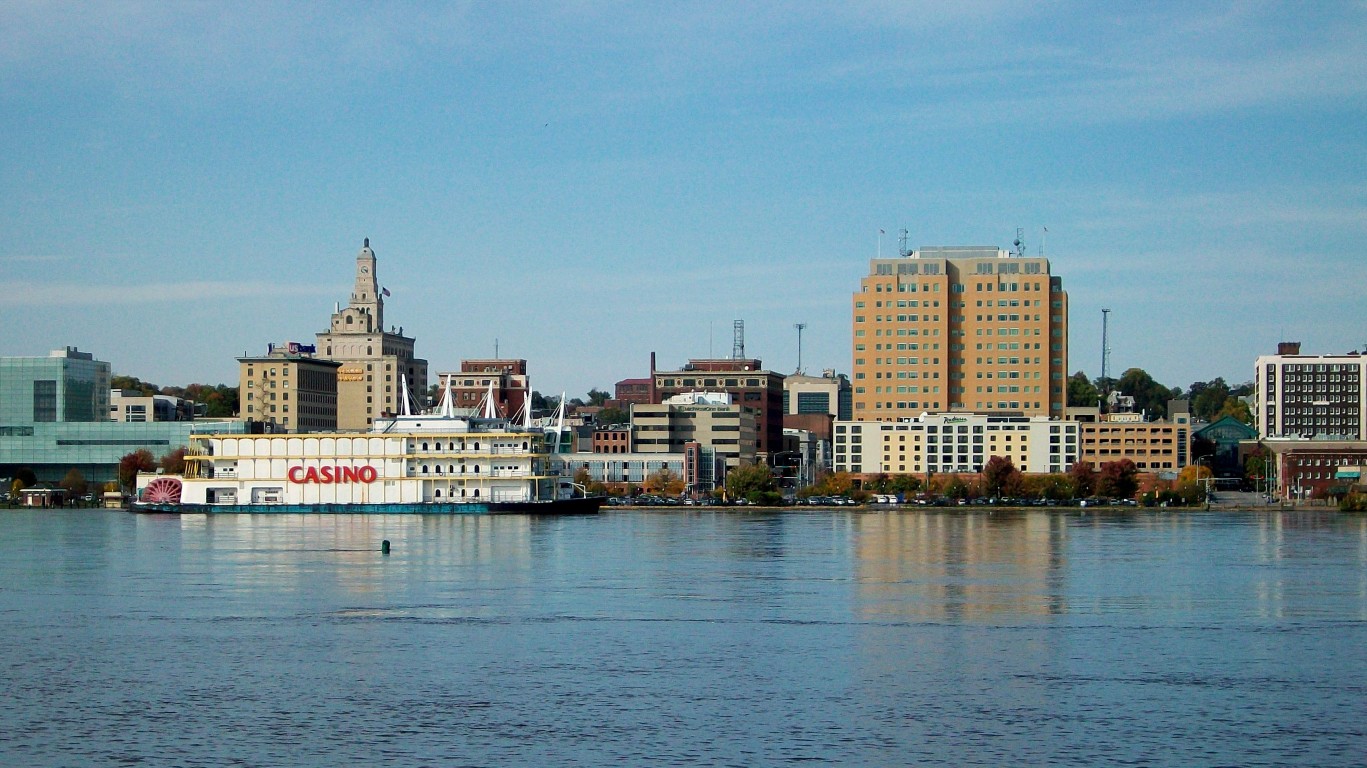
Iowa: Davenport-Moline-Rock Island, IA-IL
Avg. new daily cases in Davenport in week ending August 30: 43.1 per 100,000
Avg. new daily cases in Davenport in week ending August 23: 27.5 per 100,000
COVID-19 cases in Davenport as of August 30: 45,468 (11,928.4 per 100,000)
Peak pandemic unemployment in Davenport: 16.0% (April 2020)
Davenport population: 381,175 (167.9 people per sq. mi.)
These are all the counties in Iowa where COVID-19 is slowing (and where it’s still getting worse).
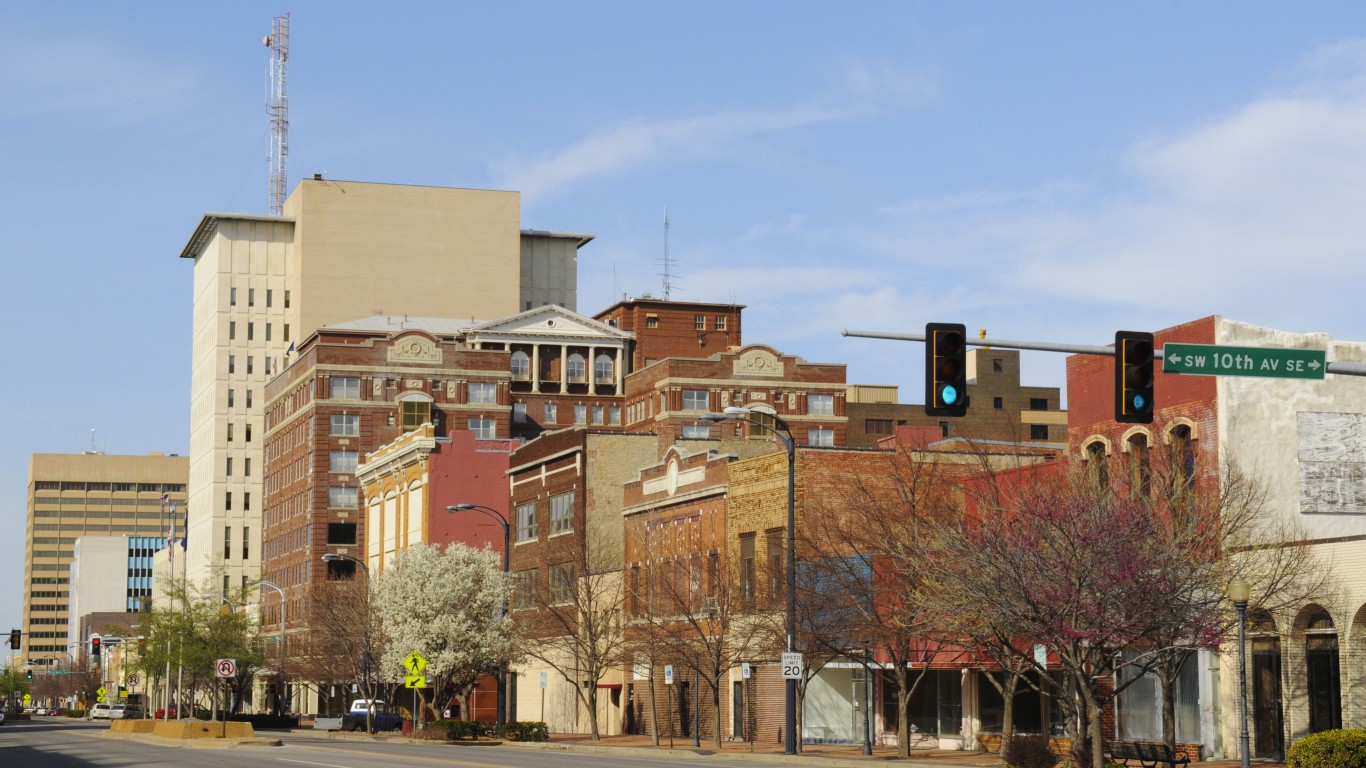
Kansas: Topeka
Avg. new daily cases in Topeka in week ending August 30: 87.8 per 100,000
Avg. new daily cases in Topeka in week ending August 23: 45.4 per 100,000
COVID-19 cases in Topeka as of August 30: 27,592 (11,853.4 per 100,000)
Peak pandemic unemployment in Topeka: 12.4% (April 2020)
Topeka population: 232,778 (72.0 people per sq. mi.)
These are all the counties in Kansas where COVID-19 is slowing (and where it’s still getting worse).
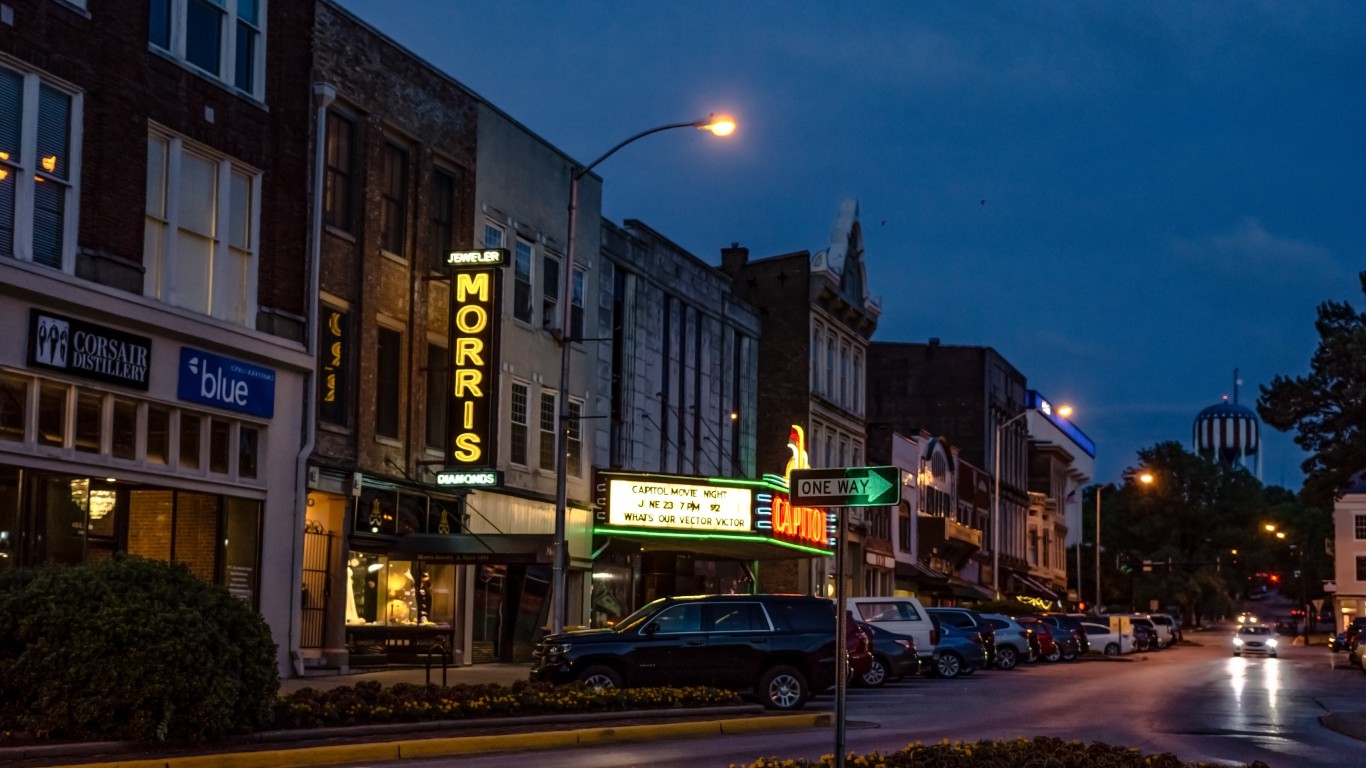
Kentucky: Bowling Green
Avg. new daily cases in Bowling Green in week ending August 30: 128.9 per 100,000
Avg. new daily cases in Bowling Green in week ending August 23: 76.4 per 100,000
COVID-19 cases in Bowling Green as of August 30: 25,575 (14,656.3 per 100,000)
Peak pandemic unemployment in Bowling Green: 18.8% (April 2020)
Bowling Green population: 174,498 (108.1 people per sq. mi.)
Louisiana: Houma-Thibodaux
Avg. new daily cases in Houma in week ending August 30: 178.7 per 100,000
Avg. new daily cases in Houma in week ending August 23: 147.8 per 100,000
COVID-19 cases in Houma as of August 30: 34,175 (16,261.3 per 100,000)
Peak pandemic unemployment in Houma: 13.1% (April 2020)
Houma population: 210,162 (91.4 people per sq. mi.)

Maine: Bangor
Avg. new daily cases in Bangor in week ending August 30: 29.3 per 100,000
Avg. new daily cases in Bangor in week ending August 23: 23.4 per 100,000
COVID-19 cases in Bangor as of August 30: 7,408 (4,880.9 per 100,000)
Peak pandemic unemployment in Bangor: 9.6% (April 2020)
Bangor population: 151,774 (44.7 people per sq. mi.)
These are all the counties in Maine where COVID-19 is slowing (and where it’s still getting worse).

Maryland: Cumberland, MD-WV
Avg. new daily cases in Cumberland in week ending August 30: 48.3 per 100,000
Avg. new daily cases in Cumberland in week ending August 23: 21.6 per 100,000
COVID-19 cases in Cumberland as of August 30: 10,882 (11,035.2 per 100,000)
Peak pandemic unemployment in Cumberland: 14.0% (April 2020)
Cumberland population: 98,612 (131.1 people per sq. mi.)

Massachusetts: Springfield
Avg. new daily cases in Springfield in week ending August 30: 28.4 per 100,000
Avg. new daily cases in Springfield in week ending August 23: 20.4 per 100,000
COVID-19 cases in Springfield as of August 30: 68,974 (9,860.8 per 100,000)
Peak pandemic unemployment in Springfield: 17.1% (June 2020)
Springfield population: 699,480 (379.4 people per sq. mi.)
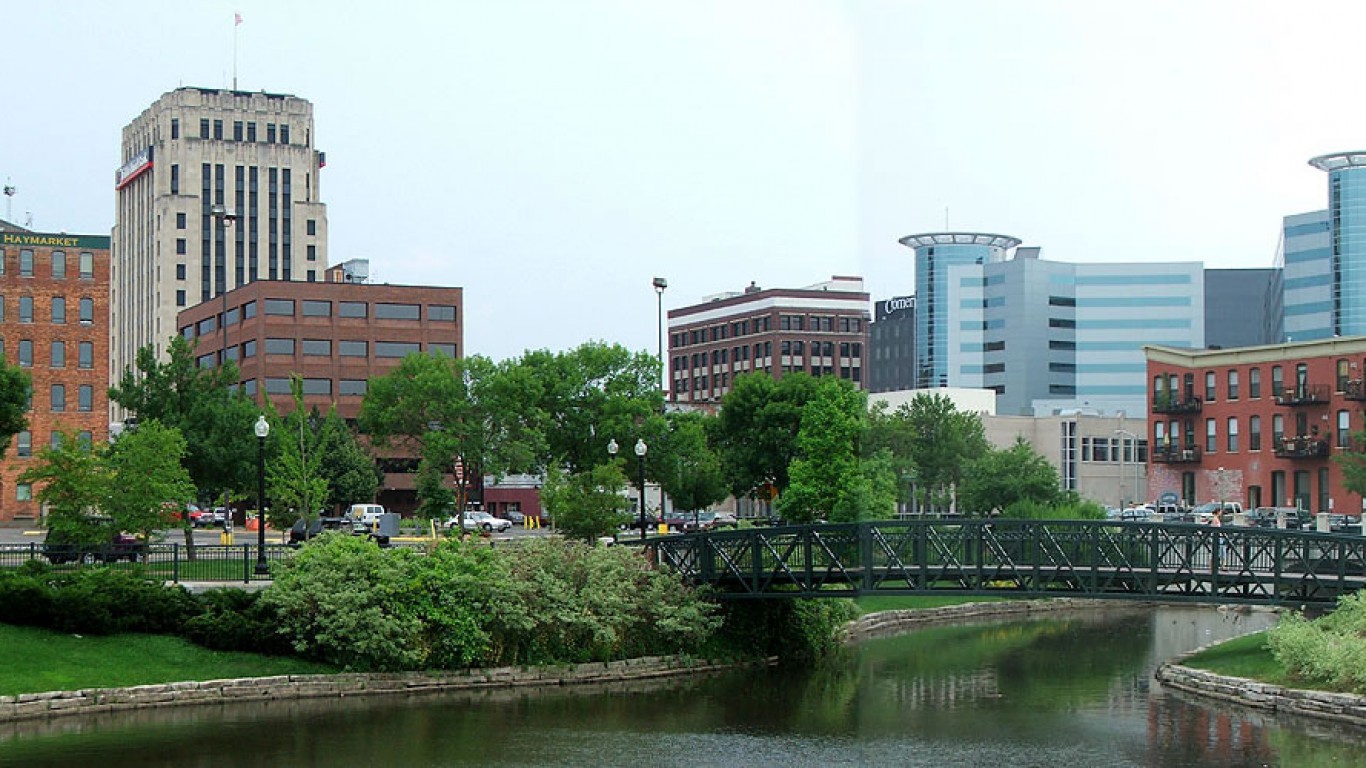
Michigan: Kalamazoo-Portage
Avg. new daily cases in Kalamazoo in week ending August 30: 28.2 per 100,000
Avg. new daily cases in Kalamazoo in week ending August 23: 19.4 per 100,000
COVID-19 cases in Kalamazoo as of August 30: 24,945 (9,494.0 per 100,000)
Peak pandemic unemployment in Kalamazoo: 18.8% (April 2020)
Kalamazoo population: 262,745 (467.8 people per sq. mi.)

Minnesota: Rochester
Avg. new daily cases in Rochester in week ending August 30: 40.3 per 100,000
Avg. new daily cases in Rochester in week ending August 23: 25.5 per 100,000
COVID-19 cases in Rochester as of August 30: 20,864 (9,572.2 per 100,000)
Peak pandemic unemployment in Rochester: 9.7% (May 2020)
Rochester population: 217,964 (88.0 people per sq. mi.)
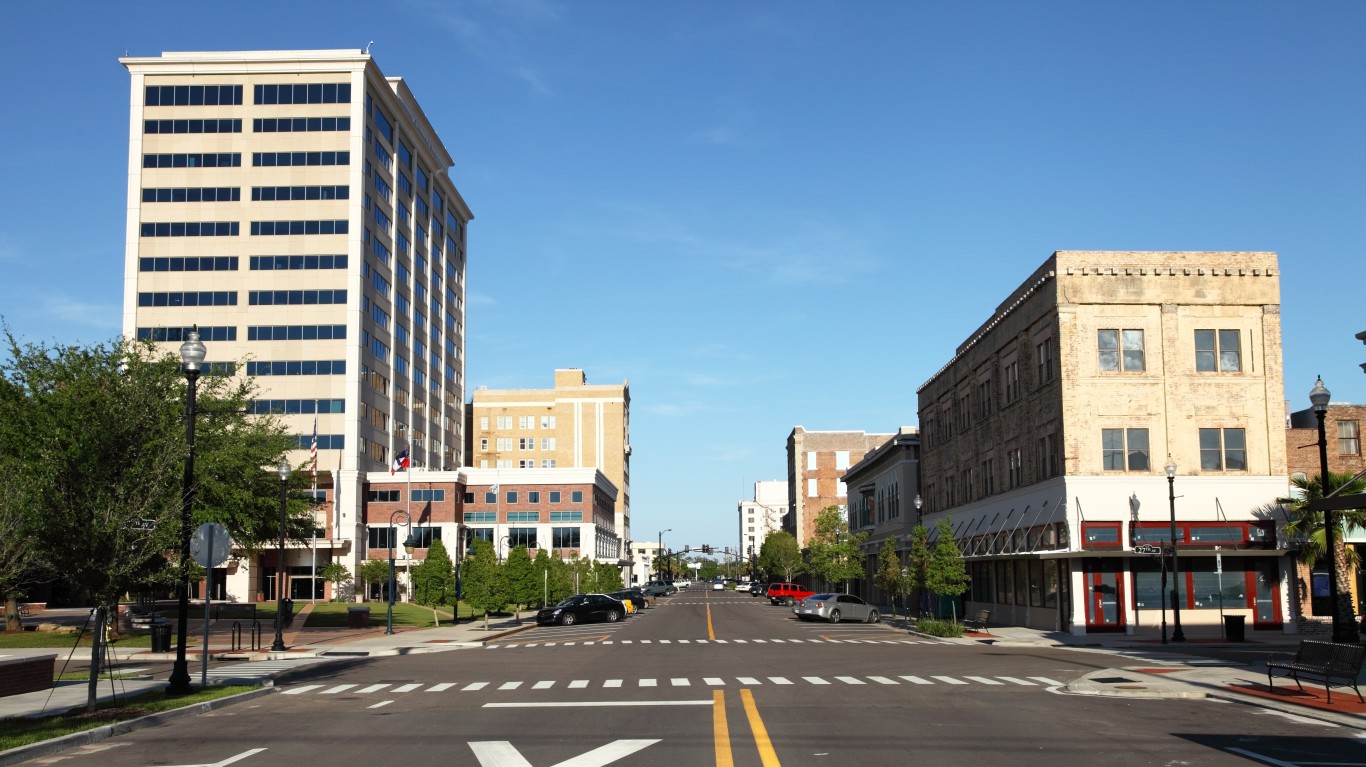
Mississippi: Gulfport-Biloxi
Avg. new daily cases in Gulfport in week ending August 30: 180.4 per 100,000
Avg. new daily cases in Gulfport in week ending August 23: 160.3 per 100,000
COVID-19 cases in Gulfport as of August 30: 59,034 (14,324.6 per 100,000)
Peak pandemic unemployment in Gulfport: 22.3% (April 2020)
Gulfport population: 412,115 (186.0 people per sq. mi.)

Missouri: Cape Girardeau, MO-IL
Avg. new daily cases in Cape Girardeau in week ending August 30: 60.7 per 100,000
Avg. new daily cases in Cape Girardeau in week ending August 23: 47.0 per 100,000
COVID-19 cases in Cape Girardeau as of August 30: 12,433 (12,820.7 per 100,000)
Peak pandemic unemployment in Cape Girardeau: 10.1% (April 2020)
Cape Girardeau population: 96,976 (67.7 people per sq. mi.)

Montana: Great Falls
Avg. new daily cases in Great Falls in week ending August 30: 57.5 per 100,000
Avg. new daily cases in Great Falls in week ending August 23: 50.9 per 100,000
COVID-19 cases in Great Falls as of August 30: 10,823 (13,259.4 per 100,000)
Peak pandemic unemployment in Great Falls: 12.6% (April 2020)
Great Falls population: 81,625 (30.3 people per sq. mi.)

Nebraska: Omaha-Council Bluffs, NE-IA
Avg. new daily cases in Omaha in week ending August 30: 5.3 per 100,000
Avg. new daily cases in Omaha in week ending August 23: 3.9 per 100,000
COVID-19 cases in Omaha as of August 30: 117,849 (12,647.7 per 100,000)
Peak pandemic unemployment in Omaha: 10.2% (April 2020)
Omaha population: 931,779 (214.2 people per sq. mi.)
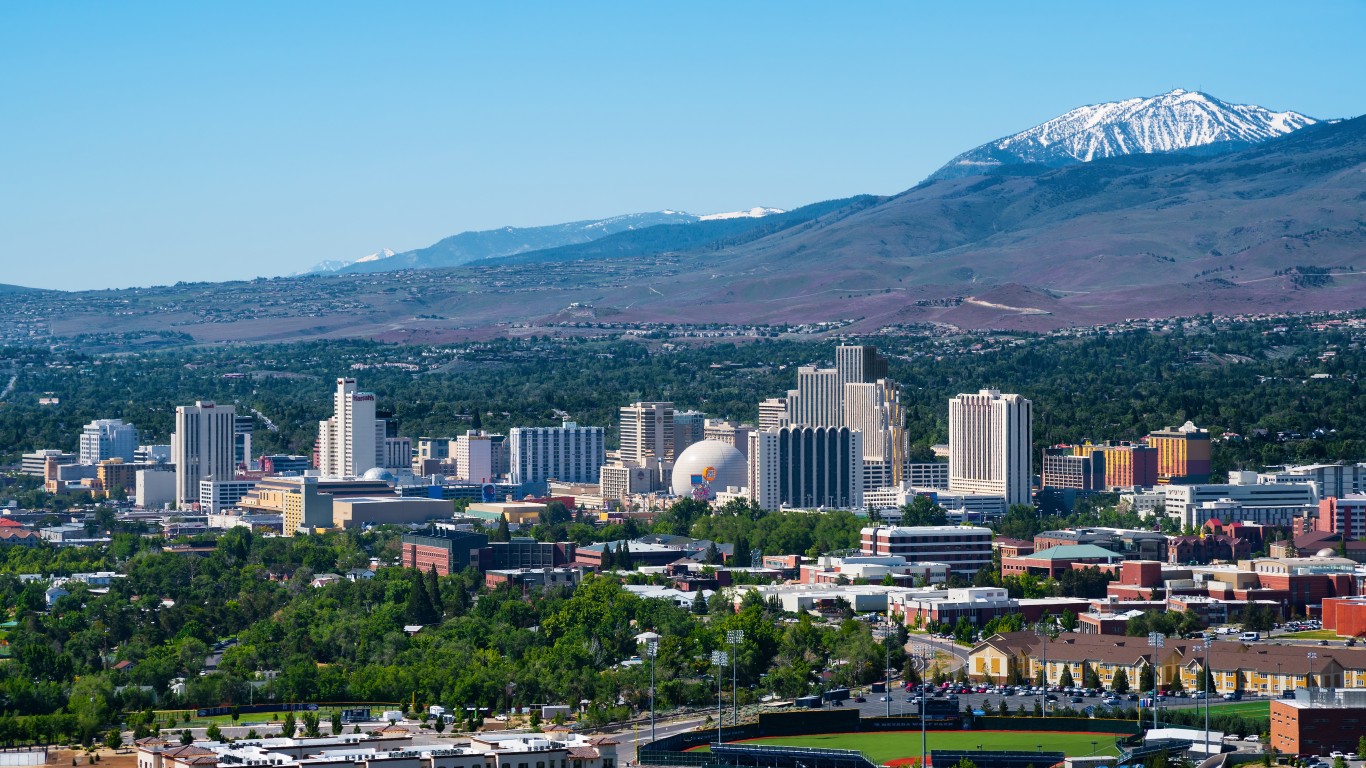
Nevada: Reno
Avg. new daily cases in Reno in week ending August 30: 60.4 per 100,000
Avg. new daily cases in Reno in week ending August 23: 38.9 per 100,000
COVID-19 cases in Reno as of August 30: 53,183 (11,538.3 per 100,000)
Peak pandemic unemployment in Reno: 20.5% (April 2020)
Reno population: 460,924 (70.2 people per sq. mi.)
These are all the counties in Nevada where COVID-19 is slowing (and where it’s still getting worse).

New Hampshire: Manchester-Nashua
Avg. new daily cases in Manchester in week ending August 30: 20.6 per 100,000
Avg. new daily cases in Manchester in week ending August 23: 13.8 per 100,000
COVID-19 cases in Manchester as of August 30: 38,424 (9,302.8 per 100,000)
Peak pandemic unemployment in Manchester: 17.5% (April 2020)
Manchester population: 413,035 (471.4 people per sq. mi.)
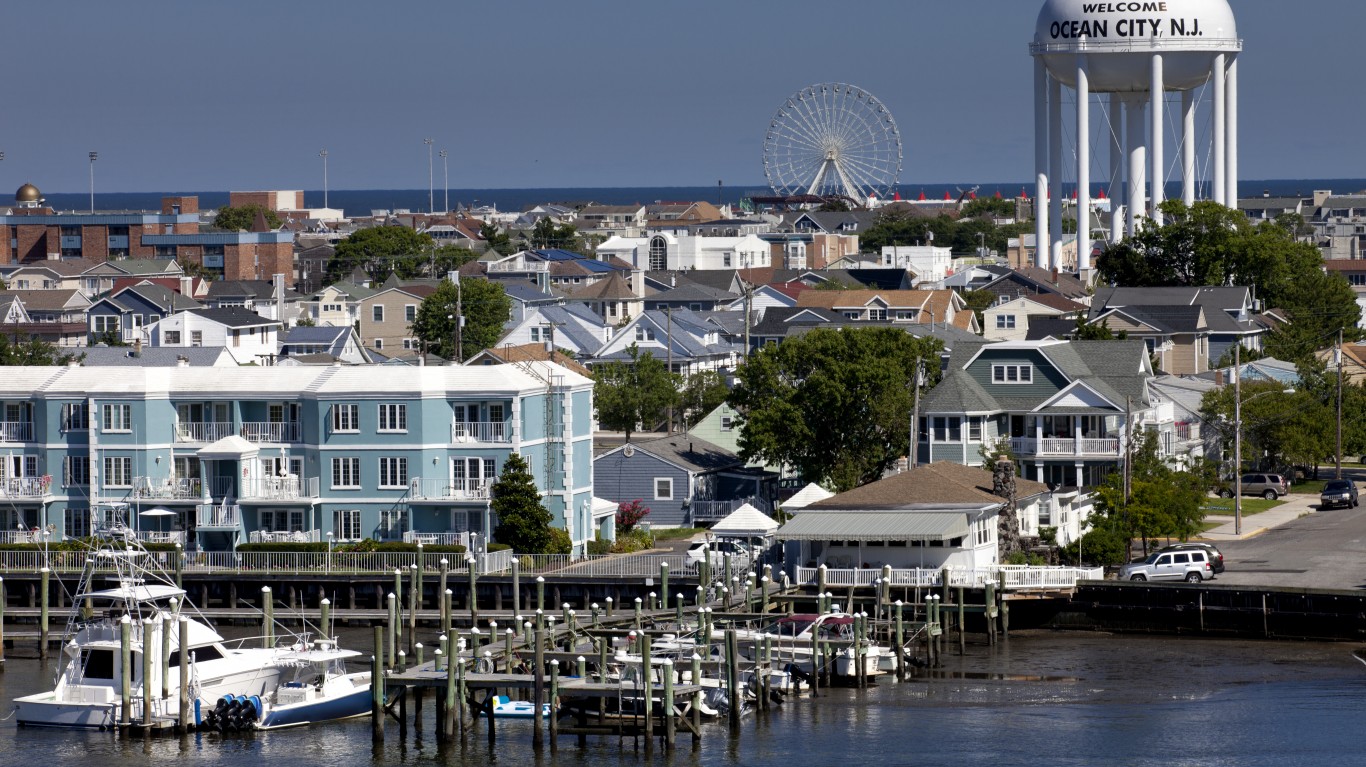
New Jersey: Ocean City
Avg. new daily cases in Ocean City in week ending August 30: 57.9 per 100,000
Avg. new daily cases in Ocean City in week ending August 23: 44.0 per 100,000
COVID-19 cases in Ocean City as of August 30: 10,614 (11,402.4 per 100,000)
Peak pandemic unemployment in Ocean City: 26.6% (June 2020)
Ocean City population: 93,086 (370.2 people per sq. mi.)

New Mexico: Farmington
Avg. new daily cases in Farmington in week ending August 30: 37.8 per 100,000
Avg. new daily cases in Farmington in week ending August 23: 23.7 per 100,000
COVID-19 cases in Farmington as of August 30: 16,931 (13,382.6 per 100,000)
Peak pandemic unemployment in Farmington: 14.5% (July 2020)
Farmington population: 126,515 (22.9 people per sq. mi.)
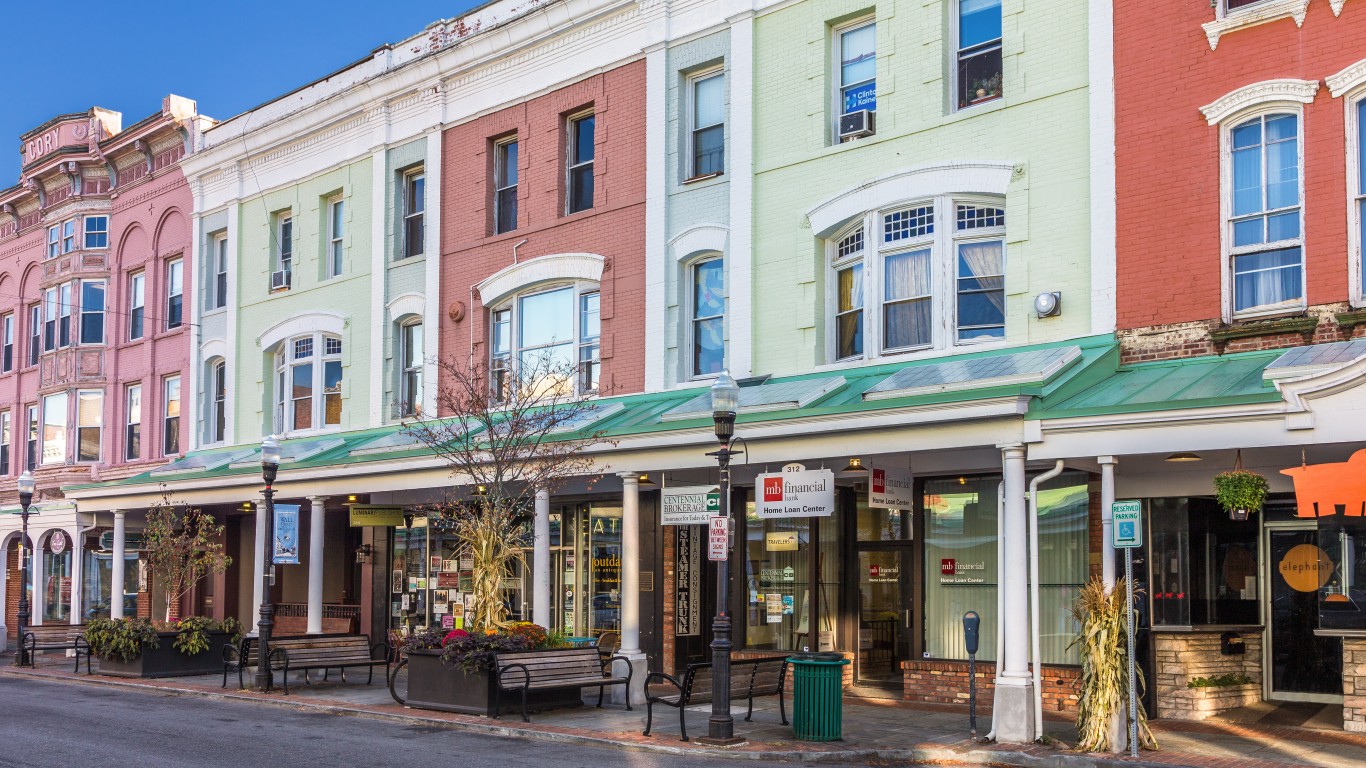
New York: Kingston
Avg. new daily cases in Kingston in week ending August 30: 31.6 per 100,000
Avg. new daily cases in Kingston in week ending August 23: 21.4 per 100,000
COVID-19 cases in Kingston as of August 30: 15,237 (8,528.3 per 100,000)
Peak pandemic unemployment in Kingston: 15.4% (April 2020)
Kingston population: 178,665 (158.9 people per sq. mi.)
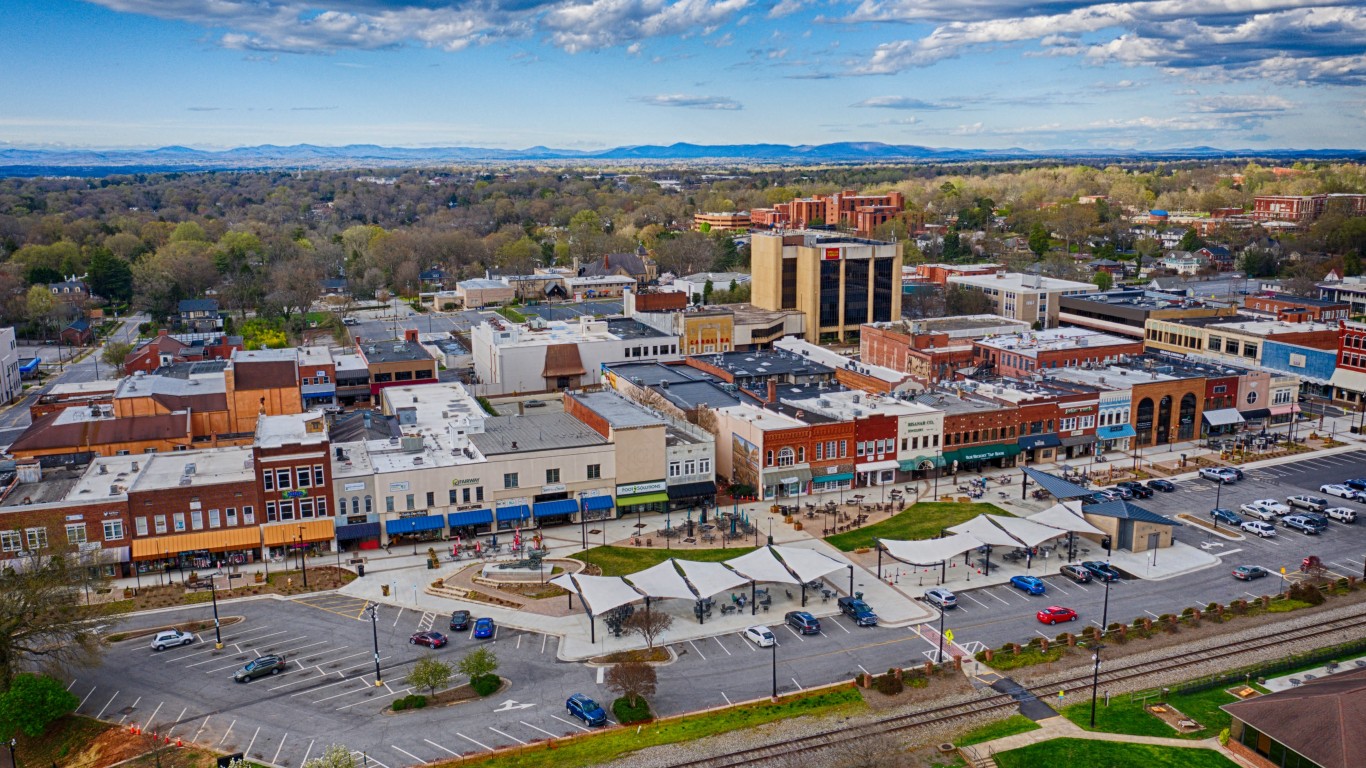
North Carolina: Hickory-Lenoir-Morganton
Avg. new daily cases in Hickory in week ending August 30: 73.7 per 100,000
Avg. new daily cases in Hickory in week ending August 23: 53.0 per 100,000
COVID-19 cases in Hickory as of August 30: 50,657 (13,815.1 per 100,000)
Peak pandemic unemployment in Hickory: 18.2% (April 2020)
Hickory population: 366,678 (223.9 people per sq. mi.)
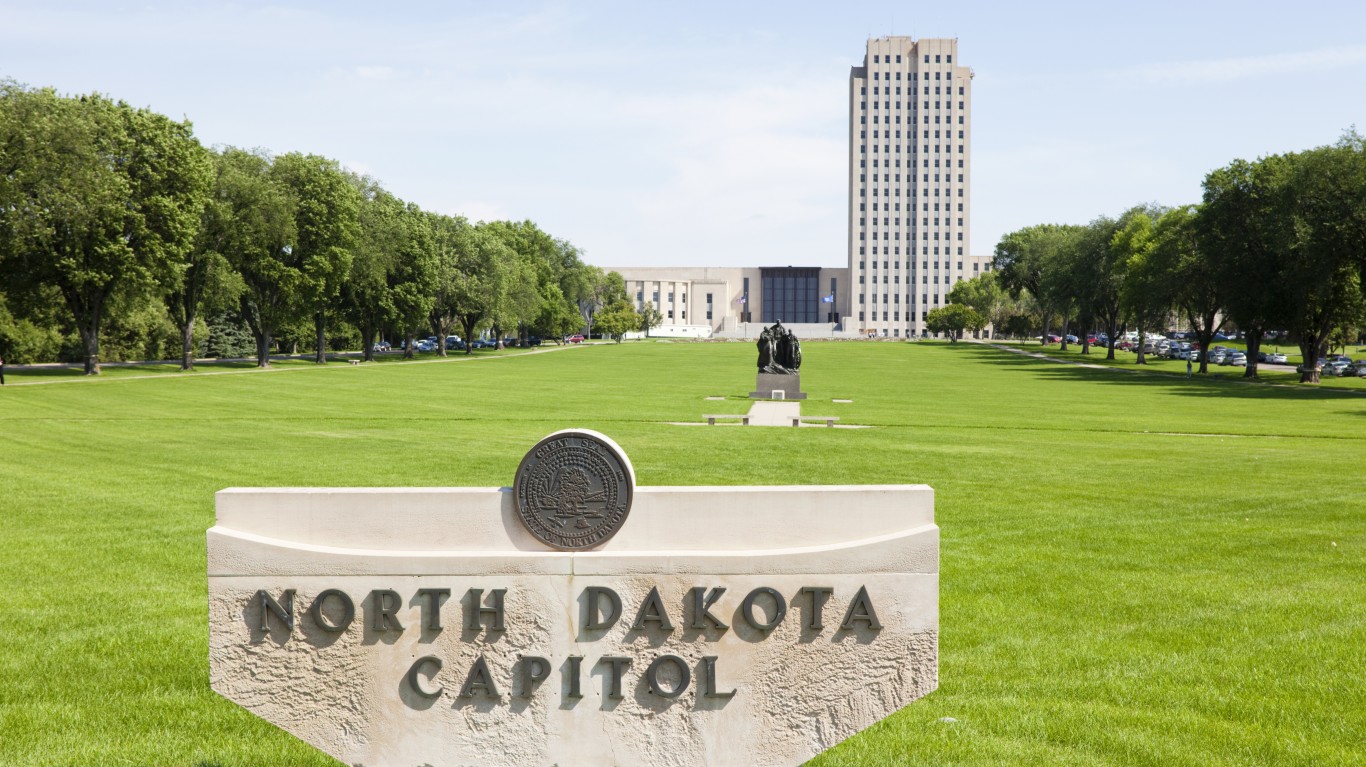
North Dakota: Bismarck
Avg. new daily cases in Bismarck in week ending August 30: 46.7 per 100,000
Avg. new daily cases in Bismarck in week ending August 23: 25.9 per 100,000
COVID-19 cases in Bismarck as of August 30: 22,862 (17,930.6 per 100,000)
Peak pandemic unemployment in Bismarck: 9.5% (April 2020)
Bismarck population: 127,503 (29.8 people per sq. mi.)
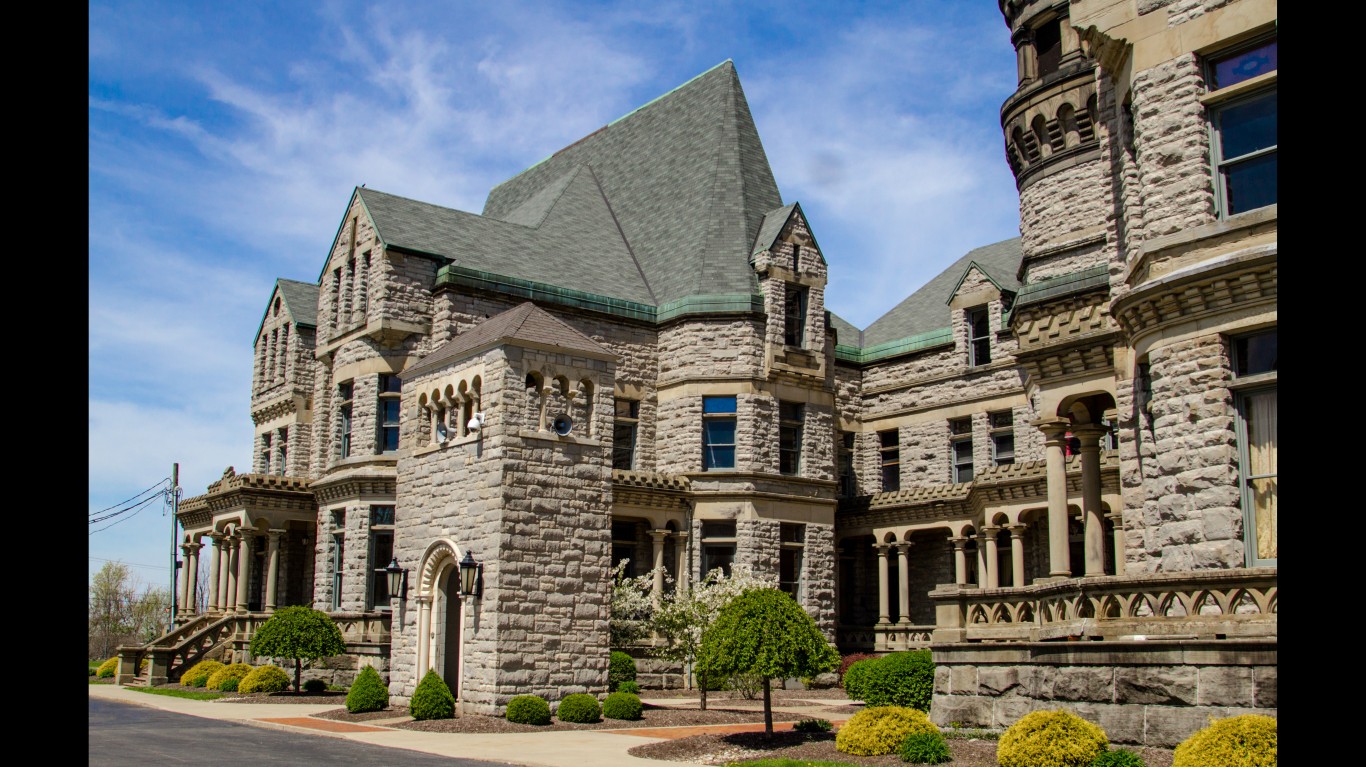
Ohio: Mansfield
Avg. new daily cases in Mansfield in week ending August 30: 65.6 per 100,000
Avg. new daily cases in Mansfield in week ending August 23: 39.9 per 100,000
COVID-19 cases in Mansfield as of August 30: 13,372 (11,042.1 per 100,000)
Peak pandemic unemployment in Mansfield: 20.4% (April 2020)
Mansfield population: 121,100 (244.5 people per sq. mi.)
These are all the counties in Ohio where COVID-19 is slowing (and where it’s still getting worse).

Oklahoma: Tulsa
Avg. new daily cases in Tulsa in week ending August 30: 65.5 per 100,000
Avg. new daily cases in Tulsa in week ending August 23: 62.3 per 100,000
COVID-19 cases in Tulsa as of August 30: 134,857 (13,614.4 per 100,000)
Peak pandemic unemployment in Tulsa: 15.7% (April 2020)
Tulsa population: 990,544 (158.0 people per sq. mi.)
Oregon: Grants Pass
Avg. new daily cases in Grants Pass in week ending August 30: 160.7 per 100,000
Avg. new daily cases in Grants Pass in week ending August 23: 124.7 per 100,000
COVID-19 cases in Grants Pass as of August 30: 6,915 (8,017.3 per 100,000)
Peak pandemic unemployment in Grants Pass: 15.1% (April 2020)
Grants Pass population: 86,251 (52.6 people per sq. mi.)
These are all the counties in Oregon where COVID-19 is slowing (and where it’s still getting worse).

Pennsylvania: Chambersburg-Waynesboro
Avg. new daily cases in Chambersburg in week ending August 30: 34.9 per 100,000
Avg. new daily cases in Chambersburg in week ending August 23: 18.4 per 100,000
COVID-19 cases in Chambersburg as of August 30: 16,584 (10,758.6 per 100,000)
Peak pandemic unemployment in Chambersburg: 13.3% (April 2020)
Chambersburg population: 154,147 (199.6 people per sq. mi.)

Rhode Island: Providence-Warwick, RI-MA
Avg. new daily cases in Providence in week ending August 30: 27.8 per 100,000
Avg. new daily cases in Providence in week ending August 23: 21.3 per 100,000
COVID-19 cases in Providence as of August 30: 219,220 (13,546.6 per 100,000)
Peak pandemic unemployment in Providence: 18.5% (April 2020)
Providence population: 1,618,268 (1,019.8 people per sq. mi.)

South Carolina: Charleston-North Charleston
Avg. new daily cases in Charleston in week ending August 30: 118.7 per 100,000
Avg. new daily cases in Charleston in week ending August 23: 78.6 per 100,000
COVID-19 cases in Charleston as of August 30: 102,724 (13,263.1 per 100,000)
Peak pandemic unemployment in Charleston: 12.3% (April 2020)
Charleston population: 774,508 (299.2 people per sq. mi.)
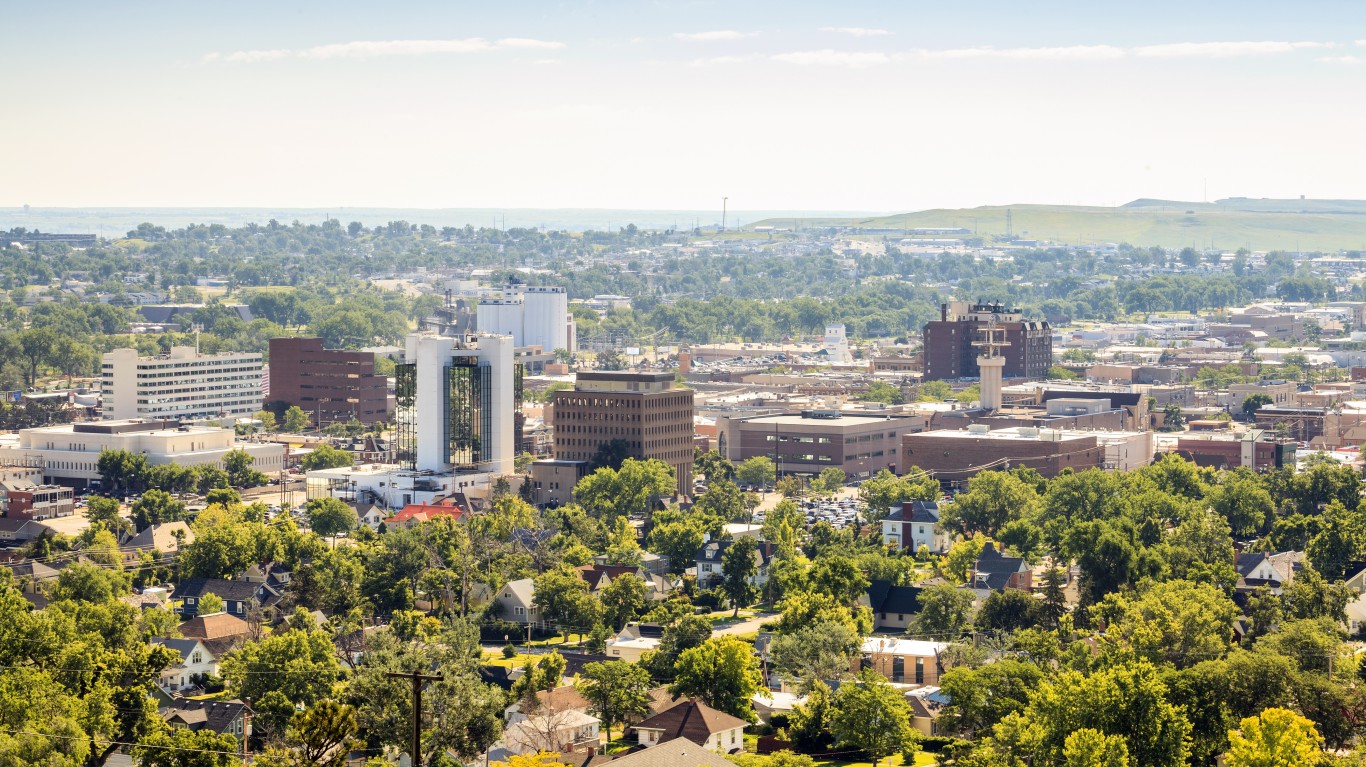
South Dakota: Rapid City
Avg. new daily cases in Rapid City in week ending August 30: 87.6 per 100,000
Avg. new daily cases in Rapid City in week ending August 23: 37.4 per 100,000
COVID-19 cases in Rapid City as of August 30: 18,715 (13,522.2 per 100,000)
Peak pandemic unemployment in Rapid City: 13.8% (April 2020)
Rapid City population: 138,402 (22.2 people per sq. mi.)

Tennessee: Jackson
Avg. new daily cases in Jackson in week ending August 30: 141.9 per 100,000
Avg. new daily cases in Jackson in week ending August 23: 109.8 per 100,000
COVID-19 cases in Jackson as of August 30: 28,501 (15,972.1 per 100,000)
Peak pandemic unemployment in Jackson: 14.0% (April 2020)
Jackson population: 178,442 (104.3 people per sq. mi.)

Texas: San Angelo
Avg. new daily cases in San Angelo in week ending August 30: 155.0 per 100,000
Avg. new daily cases in San Angelo in week ending August 23: 78.0 per 100,000
COVID-19 cases in San Angelo as of August 30: 21,175 (17,947.0 per 100,000)
Peak pandemic unemployment in San Angelo: 11.1% (April 2020)
San Angelo population: 117,986 (77.5 people per sq. mi.)
These are all the counties in Texas where COVID-19 is slowing (and where it’s still getting worse).
Utah: Provo-Orem
Avg. new daily cases in Provo in week ending August 30: 40.7 per 100,000
Avg. new daily cases in Provo in week ending August 23: 32.3 per 100,000
COVID-19 cases in Provo as of August 30: 109,994 (17,833.3 per 100,000)
Peak pandemic unemployment in Provo: 8.1% (April 2020)
Provo population: 616,791 (114.3 people per sq. mi.)
These are all the counties in Utah where COVID-19 is slowing (and where it’s still getting worse).

Vermont: Burlington-South Burlington
Avg. new daily cases in Burlington in week ending August 30: 27.9 per 100,000
Avg. new daily cases in Burlington in week ending August 23: 22.7 per 100,000
COVID-19 cases in Burlington as of August 30: 11,424 (5,221.6 per 100,000)
Peak pandemic unemployment in Burlington: 14.8% (April 2020)
Burlington population: 218,784 (174.7 people per sq. mi.)

Virginia: Staunton
Avg. new daily cases in Staunton in week ending August 30: 70.1 per 100,000
Avg. new daily cases in Staunton in week ending August 23: 33.5 per 100,000
COVID-19 cases in Staunton as of August 30: 12,395 (10,189.0 per 100,000)
Peak pandemic unemployment in Staunton: 9.9% (April 2020)
Staunton population: 121,651 (121.4 people per sq. mi.)

Washington: Longview
Avg. new daily cases in Longview in week ending August 30: 98.2 per 100,000
Avg. new daily cases in Longview in week ending August 23: 73.0 per 100,000
COVID-19 cases in Longview as of August 30: 9,326 (8,734.0 per 100,000)
Peak pandemic unemployment in Longview: 16.5% (April 2020)
Longview population: 106,778 (93.7 people per sq. mi.)

West Virginia: Huntington-Ashland, WV-KY-OH
Avg. new daily cases in Huntington in week ending August 30: 73.8 per 100,000
Avg. new daily cases in Huntington in week ending August 23: 46.2 per 100,000
COVID-19 cases in Huntington as of August 30: 40,985 (11,327.1 per 100,000)
Peak pandemic unemployment in Huntington: 17.2% (April 2020)
Huntington population: 361,832 (144.7 people per sq. mi.)

Wisconsin: Racine
Avg. new daily cases in Racine in week ending August 30: 38.7 per 100,000
Avg. new daily cases in Racine in week ending August 23: 26.5 per 100,000
COVID-19 cases in Racine as of August 30: 27,342 (13,978.4 per 100,000)
Peak pandemic unemployment in Racine: 14.4% (April 2020)
Racine population: 195,602 (588.3 people per sq. mi.)
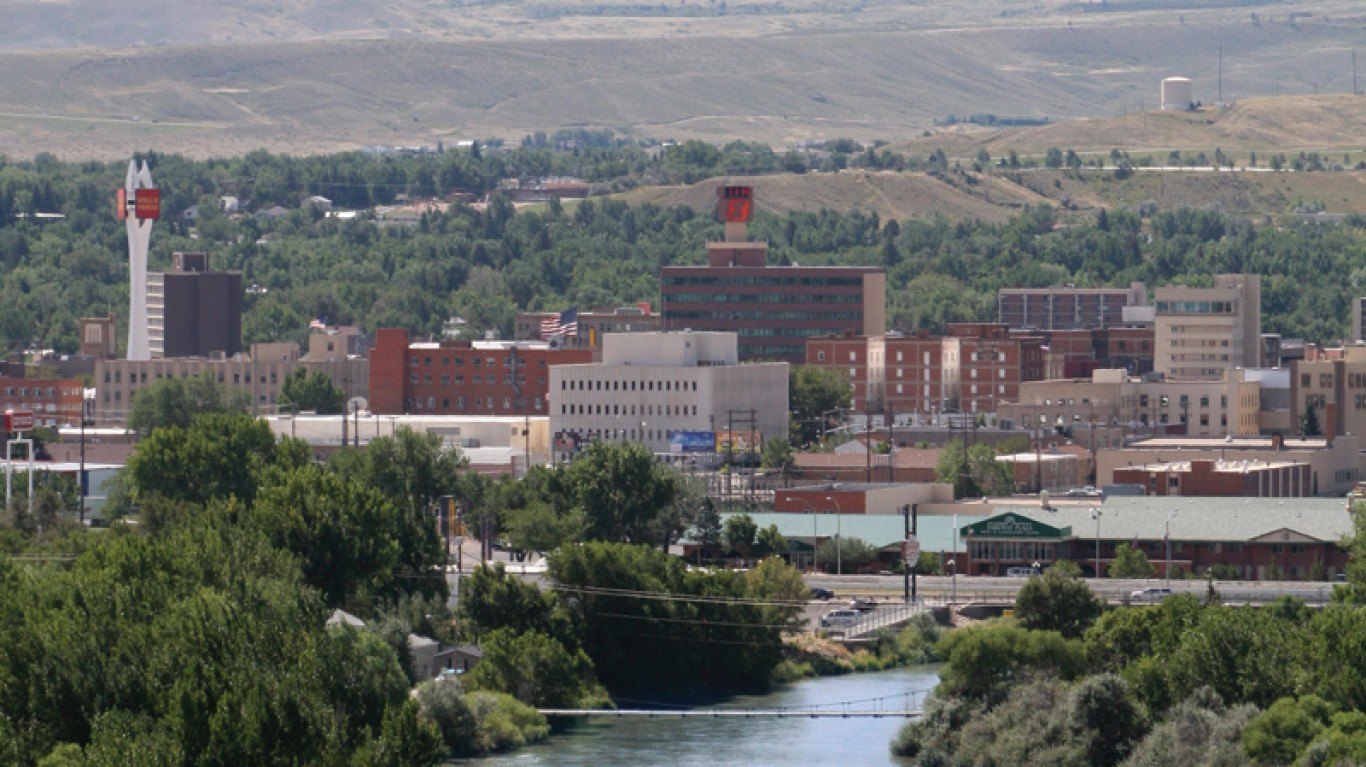
Wyoming: Casper
Avg. new daily cases in Casper in week ending August 30: 85.1 per 100,000
Avg. new daily cases in Casper in week ending August 23: 53.8 per 100,000
COVID-19 cases in Casper as of August 30: 9,646 (12,007.5 per 100,000)
Peak pandemic unemployment in Casper: 12.6% (April 2020)
Casper population: 80,333 (15.0 people per sq. mi.)
Click here to see all coronavirus data for every state.
Are you ready for retirement? Planning for retirement can be overwhelming, that’s why it could be a good idea to speak to a fiduciary financial advisor about your goals today.
Start by taking this retirement quiz right here from SmartAsset that will match you with up to 3 financial advisors that serve your area and beyond in 5 minutes. Smart Asset is now matching over 50,000 people a month.
Click here now to get started.
Thank you for reading! Have some feedback for us?
Contact the 24/7 Wall St. editorial team.